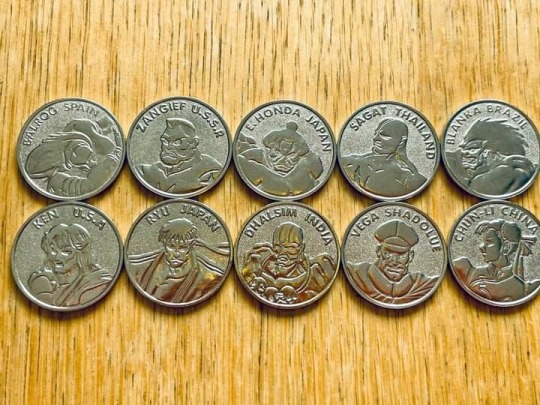#rare coins
Text

A Hoard of 122 Anglo-Saxon Coins Sells at Auction
A hoard of more than 100 Anglo-Saxon coins discovered by two metal detectorists in a field near Braintree, Essex, has been sold auction at Noonans Mayfair on February 21. Believed to have been buried in 1066 and owned by an individual who died during the Battle of Hastings. The collection of Anglo-Saxon pennies found by two metal detectorists have been sold for £325,560 ($411,000) at auction.
The coins were each worth 12 shillings, a considerable sum back in 11th century, leading Noonans’s coin expert Bradley Hopper to hypothesize that the reason they were abandoned was due “some great personal misfortune” such as the death of their owner in the conflict. Hopper added, though, that “it was perhaps quite common for people who had access neither to banks nor vaults to conceal their wealth in the ground, even in times of peace.” All bar two of the coins were minted within five years of 1066.
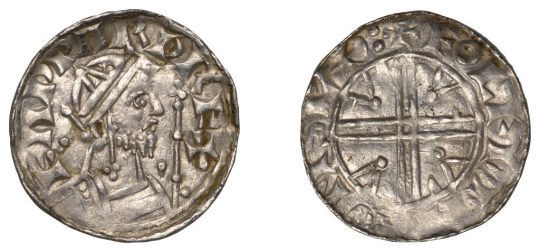

A small selection of coins from the hoard were bought by Colchester Museum and the Fitzwilliam Museum in Cambridge, following the protocol of the 1996 Treasure Act. The purchased coins include two 11th-century Byzantine coins.
The metal detectorists found the majority of the coins in 2019 over the course of a few days, all within a 100-foot radius, some just inches beneath ground’s surface. A further 70 coins were found when the site was revisited in 2020. The coins were minted in various southern English towns and cities, including London, Cambridge, Canterbury, and Hastings.
The coins date from the reigns of Edward the Confessor and Harold II, the last two Anglo-Saxon kings of England. Harold was killed during the 1066 Battle of Hastings, seen on the Bayeux Tapestry receiving a fatal arrow through the eye. His death marked the victory of William the Conqueror, the first Norman king of England.
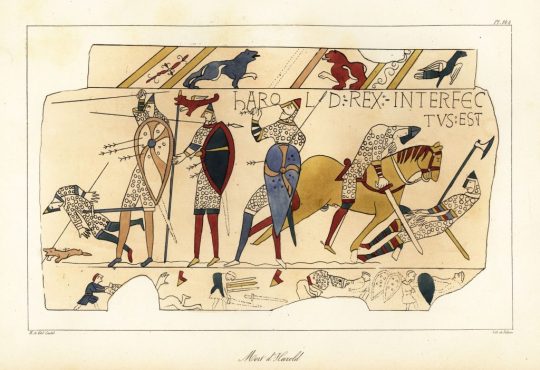
The detectorists have kept several coins, with 122 of the remaining relics headed to Noonans. The proceeds will be shared between the finders and the owner of the land on which the coins were discovered. Some coins included in the sale are exceedingly rare and could fetch £6,000 ($7,600) individually.
Hopper said that Noonans is “particularly fortunate that the auction catalogue contains not only the rarest and most academically interesting English coins from the Braintree Hoard, but also those pieces in the finest state of preservation.” He hopes that the auction will “promote further research into this wonderful coinage.”
By Verity Babbs.


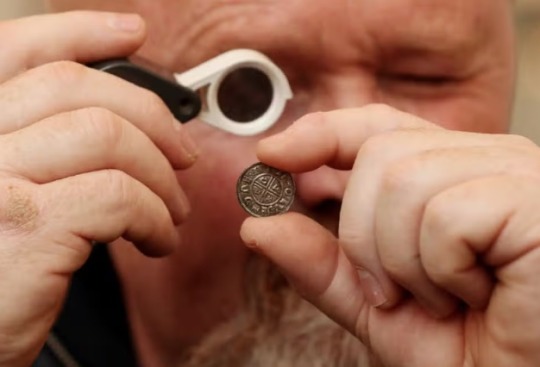
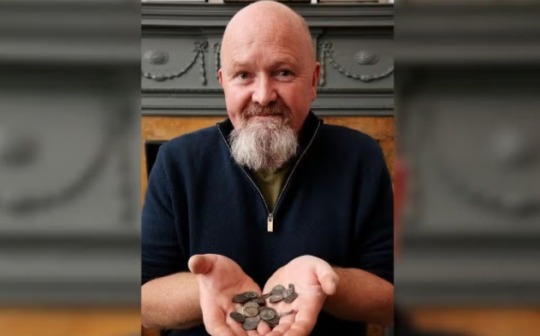
#A Hoard of 122 Anglo-Saxon Coins Sells at Auction#Noonans Mayfair#Battle of Hastings#Edward the Confessor#Harold II#William the Conqueror#metal detecting#coins#collectable coins#rare coins#ancient artifacts#archeology#archeolgst#history#history news#ancient history#ancient culture#ancient civilizations#middle ages
81 notes
·
View notes
Text
I accidentally admired a coin too much and now my friend thinks I’m a coin collector and every time she finds a unique or rare coin she saves it for me. I can’t say anything now because I think it’s very endearing and I’m 4 years deep so this is my life now. If I’m ever famous enough to write an autobiography this is going to take up a large chunk of the it. “James KG: involuntary coin collector”
5 notes
·
View notes
Text

#Rare Coins#old rare coins for sale#rare rupees coins#very rare indian coins#all rare old coins sale#bullion coins for sale
2 notes
·
View notes
Video
youtube
The making of ‘Stardust’, collectable silver coin, commissioned by The Bank of Latvia.
#youtube#imantsziedonis#collectorcoin#silver#silver coin#coin design#rare coins#liga kitchen#latvian design#ligakitchen
3 notes
·
View notes
Text
instagram
Ignacy Łukasiewicz (200th Anniversary of the Birth), 2022, Poland, 10 Złotych, Silver (.999), Mintage: 10.000, Proof, High Relief, 31.1 g, 32 mm
Jan Józef Ignacy Łukasiewicz (8 March 1822 – 7 January 1882) was a Polish pharmacist, engineer, businessman, inventor and philanthropist. He was one of the most prominent philanthropists in the Kingdom of Galicia and Lodomeria, crown land of Austria-Hungary. He was a pioneer who in 1856 built the world's first modern oil refinery. His achievements included the discovery of how to distill kerosene from seep oil, the invention of the modern kerosene lamp (1853), the introduction of the first modern street lamp in Europe (1853), and the construction of the world's first modern oil well (1854).
#coin#coincollection#coins#coinscollection#currency#hobby#coinhunting#coinphotography#numismatica#numismatist#coincollecting#coincollector#coincollections#coincollectors#rare coins#silverstacking#silvercoins#silverstacker#silver#numizmatyka#numismatique#numismatics#numismatik#numismática#invention#oil lamp#refinery#oilgas#kerosene#street lamp
8 notes
·
View notes
Text


French coin from 1796.
6 notes
·
View notes
Text
Why Bhutan Currency Equals Indian Rupees: All You Need to Know
Bhutan, a land of majestic landscapes and rich cultural heritage, is a country often associated with its unique approach to development and governance. One intriguing aspect of Bhutan is its currency, Ngultrum, which holds an equal value to the Indian rupee. Understanding the reasons behind this currency equality is essential for travelers planning a visit to this enchanting Himalayan kingdom
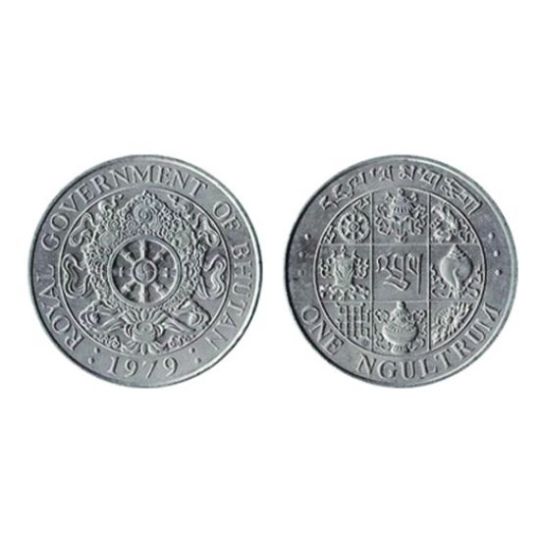
e
0 notes
Text
Rare Bicentennial Quarter: $20K Value + 6 more $1,000+ Gems! - List Your Rare Coins
REMEMBER DOUBLE STRIKE OR DIE RARITY NOT ANY OLD (BU)-76 BICENTENNIAL WILL DO, IT MUST HAVE THE ERROR TO BECOME A GEM...........
0 notes
Photo

(vía el buscador) MONEDA NAZI (?) DEL AÑO 2039 CAUSA ASOMBRO EN MEXICO
0 notes
Text

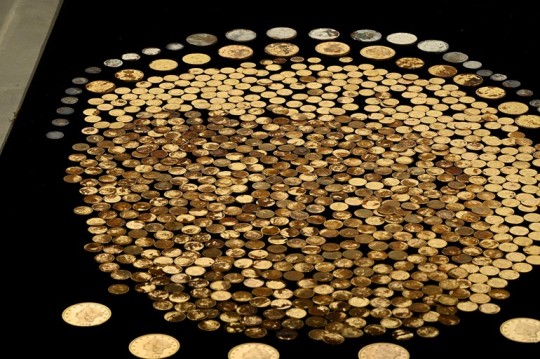
700+ Civil War-Era Gold Coins Found Buried in Kentucky
A man unearthed a huge hoard of Civil War-era gold and silver coins on his Kentucky farm.
A Kentucky man got the surprise of his life while digging in his field earlier this year: a cache of over 700 coins from the American Civil War era.
The "Great Kentucky Hoard" includes hundreds of U.S. gold pieces dating to between 1840 and 1863, in addition to a handful of silver coins. In a short video, the man who discovered the hoard — whose identity and specific location have not been revealed to the public — says, "This is the most insane thing ever: Those are all $1 gold coins, $20 gold coins, $10 gold coins," as he aims his camera at the artifacts tumbling out of the dirt.

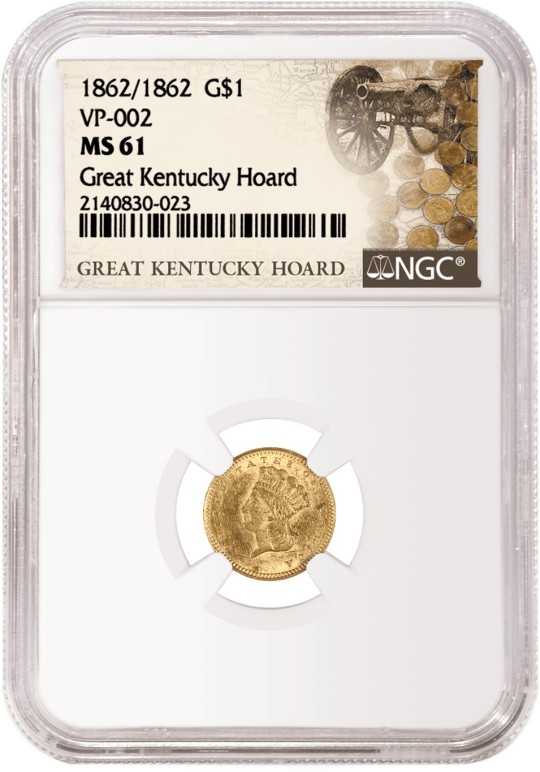
According to the Numismatic Guaranty Co. (NGC), which certified the coins' authenticity, and GovMint, where the coins were sold, 95% of the hoard is composed of gold dollars, along with 20 $10 Liberty coins and eight $20 Liberty coins. The rarest is the 1863-P $20 1-ounce gold Liberty coin. Just one of these coins can go for six figures at auction, and the Great Kentucky Hoard boasts 18 of them. NGC's website notes that the $20 Liberty coin, which circulated from 1850 to 1907, was minted by the Treasury Department after gold was discovered in California. The $20 Liberty coins in the hoard are even rarer because they do not include "In God We Trust," which was added in 1866 after the end of the Civil War.
Potentially more important, though, is what the hoard can tell us about America's history during an extremely tumultuous period.
Ryan McNutt, a conflict archaeologist at Georgia Southern University who has heard about but not seen the hoard, said in an email that "given the time period and the location in Kentucky, which was neutral at the time, it is entirely possible this was buried in advance of Confederate John Hunt Morgan's June to July 1863 raid."
Many wealthy Kentuckians are rumored to have buried huge sums of money to prevent it from being stolen by the Confederacy. James Langstaff left a letter saying he had buried $20,000 in coins on his property in Paducah, William Pettit buried $80,000 worth of gold coins near Lexington, and Confederate soldiers quarantined for measles reportedly stole payroll and hid it in a cave in Cumberland Gap. None of these caches has ever been recovered.

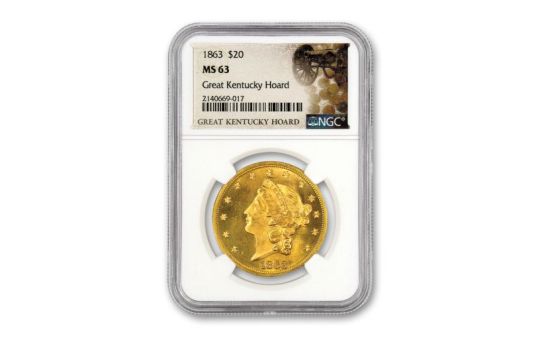
Considering the hoard coins are federal currency, McNutt said, it may be the result of a Kentuckian's dealings with the federal government — "dealings that it would be wise to conceal from a Confederate raiding party." Many Americans affected by the Civil War "became experienced with hiding goods and valuables," he said.
Most concentrations of historical artifacts found on private land end up going to market or being collected without archaeological consultation, according to McNutt. "As a conflict archaeologist, I find this loss of information particularly frustrating," he said. Hoards have an incredible amount of information about the person who collected the objects, offering archaeologists insight into a brief window in time.
Historical finds like these on private land in the U.S. do not need to be reported to an archaeologist. But McNutt, who has developed close relationships with landowners, believes that education and outreach are key to learning more about these rare coin caches.
"It is entirely up to the landowner," McNutt said, but not engaging with an archaeologist means "it's a snapshot of the past, lost forever."
By Kristina Killgrove.
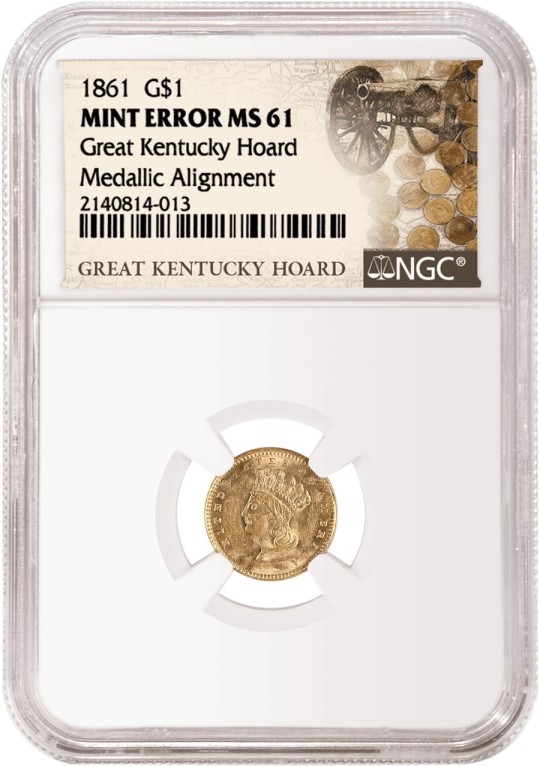
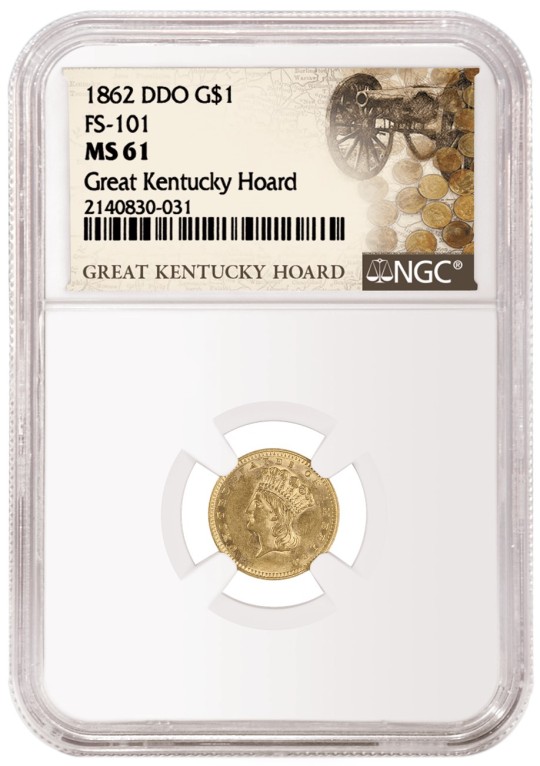

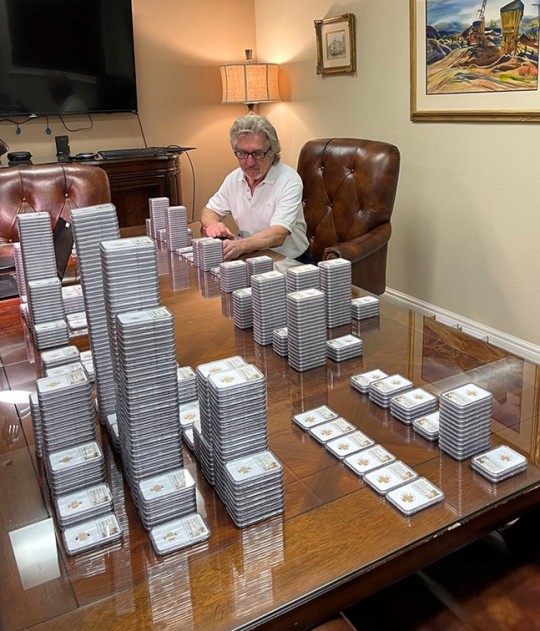
#700+ Civil War-Era Gold Coins Found Buried in Kentucky#The Great Kentucky Hoard#gold#silver#treasure#gold coins#silver coins#collectable coins#rare coins#metal detecting#archeology#archeolgst#history#history news#jackpot#discover#discovered#discovery#lucky#lucky find
48 notes
·
View notes
Video
youtube
Unboxing the Saturn Magnifier Ultra Cameo High Relief Silver Coin
Check this bad boy out! Really cool silver coin collectible - great for anyone into astronomy or for someone who just wants a super cool High Relief Coin to show!
If interested visit 7 K for more info
#youtube#saturn#saturn magnifier#silver coins#cool coins#rare coins#cool collectibles#silver and gold solutions#unboxing video#unboxing the Saturn magnifier silver coin#PF70 Ultra Cameo#perfectly graded coins
1 note
·
View note
Text
7 Best Performing Asset Classes in Collectibles: A Treasure Trove for Investors
7 Best Performing Asset Classes in Collectibles: A Treasure Trove for Investors
Unveiling the Top Picks by Invest Offshore
Investing in collectibles has long been a fascination for many, blending the allure of owning a piece of history or art with the potential for significant financial return. In recent years, this niche market has seen a surge in interest, driven by unique trends and evolving…
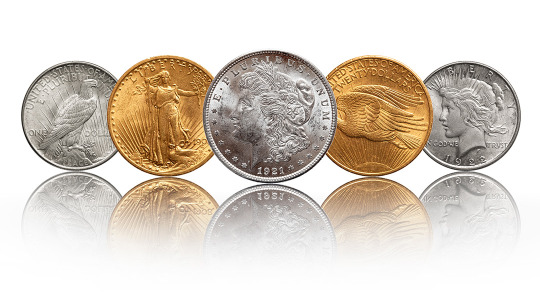
View On WordPress
1 note
·
View note
Text
instagram
Jan III Sobieski (King of Poland and Grand Duke of Lithuania), 1933, Poland, 10 Złotych, Silver (.750), Mintage: 300.000, 22 g, 34 mm
Commemorative issue: 250th Anniversary of the Battle of Vienna
- Obverse -
Crowned eagles, value below.
Lettering: RZECZPOSPOLITA POLSKA mw 10 ZŁOTYCH 10
Designer: Jan Wysocki
- Reverse -
Bust to right, dates at left.
Lettering: 1683-1933 JAN III SOBIESKI
Designer: Jan Wysocki
Edge: Smooth
Mint: MW Mint of Poland (Mennica Polska), Warsaw, Poland (1766-date)
#coin#coincollection#coins#coinscollection#currency#hobby#coinhunting#coinphotography#numismatica#numismatist#monarch#nobility#polish history#poland#coincollecting#coincollector#coincollections#coincollectors#old coins#rare coins#silvercoins#silverstacking#silverstacker#silver#numizmatyka#numismatique#numismatics#numismatik#numismática#collection
3 notes
·
View notes
